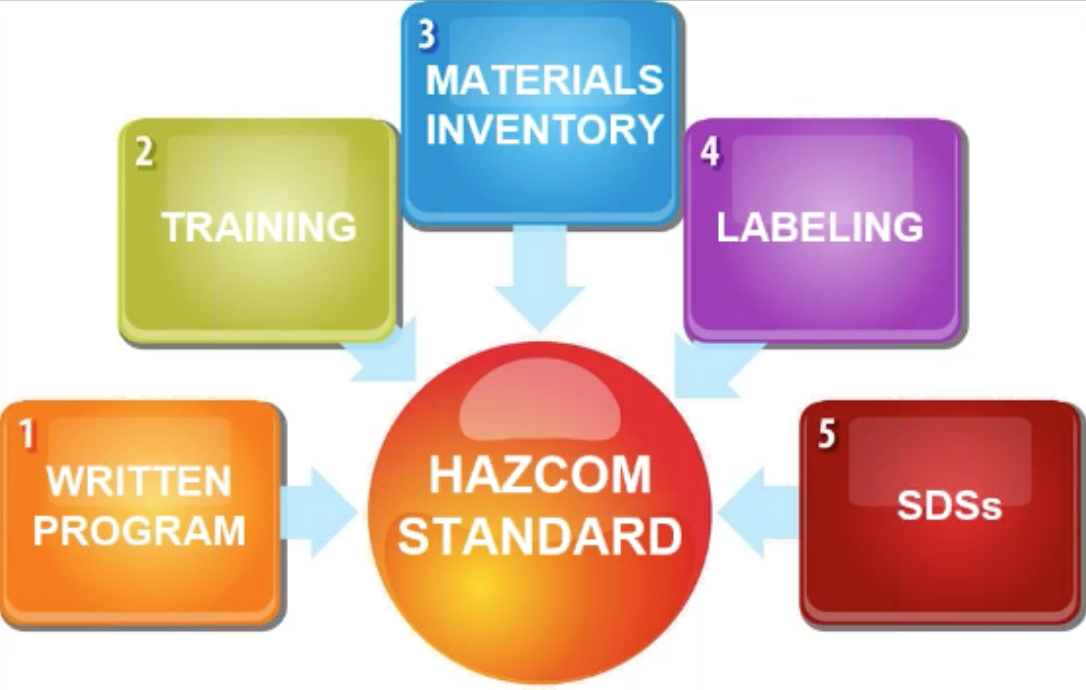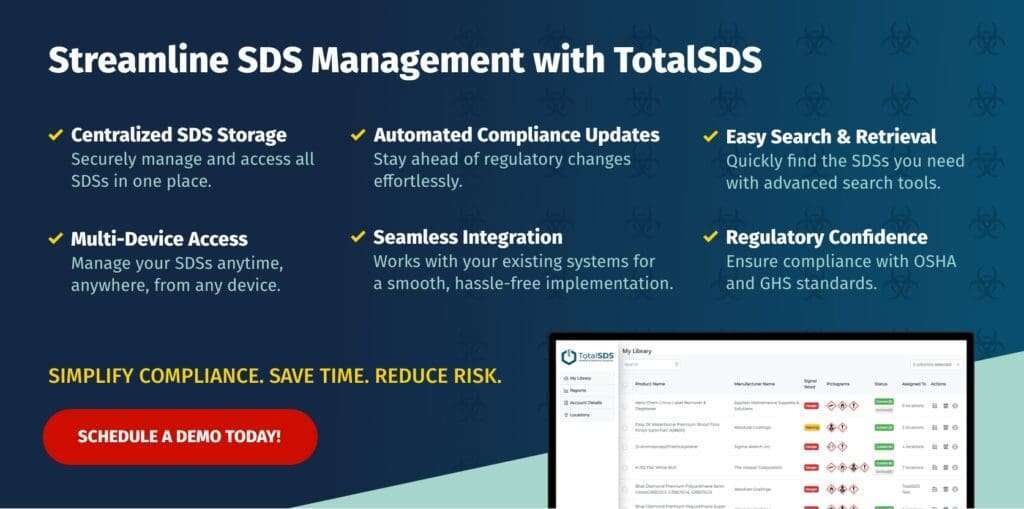Workplace chemicals present countless hazards which is why OSHA’s Hazard Communication Standards (HazCom) exists. It requires companies producing and/or using hazardous chemicals to provide employees with information and training relevant to the hazardous chemicals, their handling, protective measures, and any other significant safety concerns in accordance with OSHA’s Right-to-Know Standard.
The OSHA standards help employers understand regulations and ensure employee safety, and is composed of five key elements. These five key elements are:
-
Inventory of Hazardous Chemicals and Hazard Assessment
This is a list of the hazardous materials present in your work area. When creating your inventory, be sure to:
- Take a physical inventory of chemicals used and create a list
- Determine if an SDS is on file for each chemical
- Contact the supplier to provide a copy if any SDSs are missing
- Document the request and keep a record on file until the SDS is received
-
System for Maintaining SDSs
This is a detailed description of each hazardous material listed in the Materials Inventory. The Globally Harmonized System for Classification and Labeling of Chemicals (GHS) aims to standardize how workplaces define hazards related to a chemical, classify them and then communicate the hazards and relevant protective measures on labels and safety data sheets. As such, SDSs are required to contain 16 sections (four of which aren’t mandatory) and OSHA mandates that they should include:
- The properties of each chemical
- The physical and health hazards posed by the chemical
- Environmental health hazards
- Protective measures
- Safety precautions for handling, storing and transporting the chemical.
Safety data sheets must be available for all of the hazardous materials present in a work area and the information provided in them should be helpful and easily accessible to anyone who needs to get it quickly.
-
Chemical Labels and Warning Signs
Containers of hazardous materials must have labels which identify the material and warn of its potential hazard to employees. Employers purchasing chemicals rely on the manufacturer to supply the proper label on the chemical container. Chemical manufacturers, importers, and distributors must be sure that containers of hazardous chemicals leaving the workplace are labeled, tagged, or marked with:
- The identity of the chemical
- Appropriate hazard warnings
- The name and address of the chemical manufacturer, importer, or other responsible party
If the chemical is transferred to another container, the employer is responsible for properly labeling the new container.
-
Training Programs
All employees who may be exposed to hazardous chemicals in the workplace must be trained to identify and work safely with hazardous materials before their initial assignment and whenever the hazard changes. Train employees by:
- Discussing SDSs, explain hazards of the chemicals, safety measures, PPE, what to do if there is an exposure, and clean up of a chemical spill
- Using a variety of audiovisuals, classroom instruction, interactive videos for the training
- Training in a language and literacy level that is comprehensible to the employees
- Training by grouping the like chemicals rather than training for each individual chemical
- Training based on what chemicals each employee will be potentially encountering during the course of his or her normal duties
Further, employees must have information about where to find SDSs in the workplace, who in the company is responsible for the HazCom program, and where to get copies.
-
Written Hazard Communication Program
A written program must be developed if your company makes use of or produces hazardous chemicals. The plan should include steps to ensure that all workers are familiar with the risks involved in chemical handling and understand the labeling and symbols associated with each type of chemical hazard.
The written program must include labeling, materials inventory, safety data sheets and training, and should be implemented, maintained and readily available to employees. In addition, reviews and revisions are required on a regular basis to address changing conditions such as new chemicals or new PPE.
Remember, the purpose of the Hazard Communication Program is to reduce the likelihood of illness and injury related to chemical exposure. As the employer, you are responsible for increasing understanding and reducing risks for your employees. You can learn more in our Safety in 10 Webinar series.
At GSM, we work with you to understand your challenges and come up with the best solutions to keep you compliant. Contact us today to see how we can help you save time and money so you can focus on what is important to your business!


